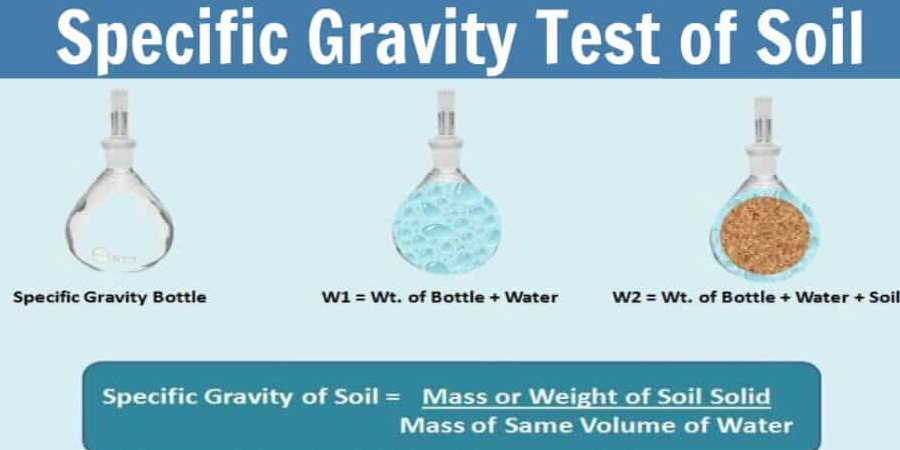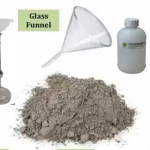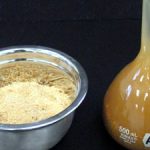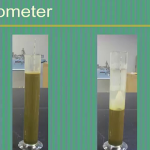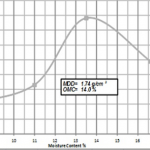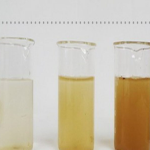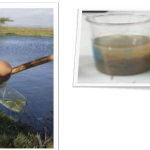Introduction
Specific gravity is the ratio of the mass of a given volume of solid or liquid to the mass of an equal volume of water at a specified temperature, commonly 4°C (39°F). The specific gravity of a soil is used in the phase relationship of air, water, and solids in a given volume of the soil. It is used in the computations of most of the laboratory tests, and is needed in nearly all pressure, settlement, and stability problems in soil engineering.
Objective(s) of the Experiment
The experiment is carried out to determine the specific gravity of a soil sample .
Equipments and Materials Needed
- No 10 Sieve
- Mortar and Pestle
- Pycnometer or Specific gravity glass bottle of 500 ml capacity with a fitted glass stopper
- Stopper – glass with small hole through centre to permit emission of air and water
- Balance – of 0.001 g sensitivity
- Thermometer
- Funnel
- Sand bath for heating
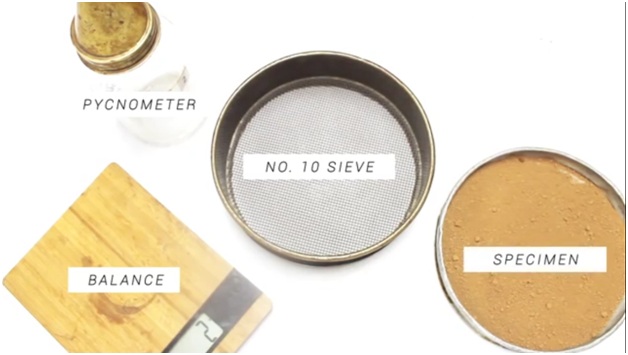
Procedures
Preparation of Specimen
- Oven dry the sample for at least 24 hours
- Use mortar and pestle to break down the clumped soil sample
- Pour into the No 10 sieve and sieve out the sample
- The portion of the sample that passed through the sieve is used for the determination of specific gravity.
Procedures
- For accurate results and ease of calculations, calibrate the volumetric flask and Make all subsequent tests at one chosen temperature. Select any temperature between 10oC and 27oC (50oF and 80oF).
- Weigh the specific gravity bottle = A
- Transfer the oven dried, sieved soil sample to the specific gravity bottle (about 50gm when the 250ml volumetric flask is used, about10-20gm when 50cc stoppered bottle is used or 100gm when 500ml pyconometer is used).
- Weigh the bottle together with the soil. Weight of bottle + soil = B
- Add distilled water to fill the bottle to about three-fourth (3/4).
- Remove the entrapped air either by subjecting the contents to a partial vacuum or by boiling gently in a sand-bath till the air bubbles cease to appear while occasionally rolling the bottle to assist in removal of air.
- Then cool to room temperature and fill the bottle with distilled water up to the mark and clean and dry the outside surface with a clean, dry cloth and note down the temperature.
- Determine the weight of the bottle with water and soil. Weight of bottle + soil + water = C.
- Then remove the soil and water from the bottle and clean it
- Fill the bottle to fill (to the mark) with distilled water. Weight of bottle + water to fill = D.
- From data obtained determine specific gravity of the soil as shown below.
Results and Calculations
Data Sheet for Determination of Specific Gravity of Soil
- Test No = ________
- Selected Temperature = _________ ºC
- Bottle No._________
- Weight of the Specific Gravity Bottle (A) = ________
- Weight of Specific Gravity Bottle + Soil (B) = ________
- Weight of Specific Gravity Bottle + Soil + Water (C) = ________
- Weight of Specific Gravity Bottle + Water to fill (D) = ________
- Specific Gravity of Soil at Selected Temperature ºC = _________

- Temperature Correction, K27 (See Table 1) = ________
- Specific Gravity of Soil at Temperature 27ºC Gs = K27 x G’s = ________
Note
Three tests should be done, and the average should be taken as the specific gravity of the soil. It should also be noted that specific gravity has no unit.
Table 1: Variation of K27 with Temperature
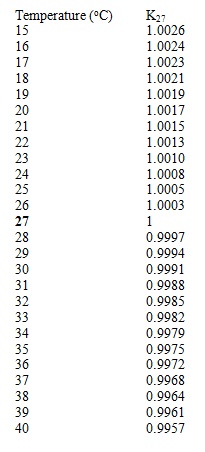
References
- Indian Institute of Technology Gandhinagar. “Specific Gravity Test (IS-2720-PART-3/section-1-1980)(Reaffirmed-2002)”. Department of Civil Engineering, Soil Mechanics Laboratory.
- Texas Department of Transportation. ‘Test Procedure for Determining the Specific Gravity of Soils’. TxDOT Designation: Tex-108-E. Effective Date: August 1999.
Download “Specific Gravity of Soil Determination”
Specific-Gravity-of-Soil-1.docx – Downloaded 0 times – 187.99 KB
